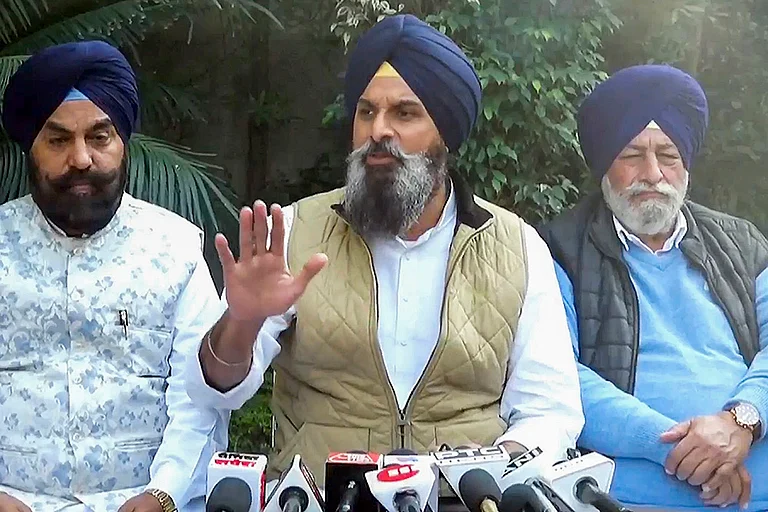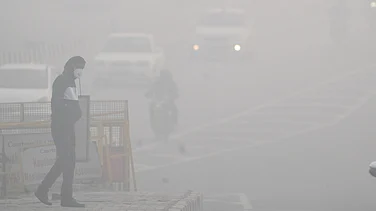Kashmir is in the news again, and, as usual, for the wrong reasons. Not that much has gone well for Kashmiris in recent years, and particularly after the abrogation of Article 370 on August 5, 2019, and the downgrading of the state of Jammu and Kashmir into the Union Territories of Jammu and Kashmir and Ladakh. The administration of the state has been taken over by outsiders, emissaries of the Union government, whose concern is primarily with the amalgamation—by force and by administrative fiat—of Kashmir into India rather than the amelioration of the miseries faced by Kashmiris, whether they live in Kashmir or elsewhere. Low-level militancy continues and soldiers as well as Kashmiris die in encounters. The harm done by such violence only confirms the large-scale alienation of Kashmiris from all the institutions that surveil and govern them. What of the Kashmiri Pandits who no longer live there, whose well-being this government espouses? Nothing that the government has done, either before or after the abrogation of Article 370, has made their lives any easier. Nor has the government moved to do anything that will allow them to return home, an idea that fades into improbability as older generations pass away and younger Pandits settle into professions and lives away from Kashmir.
Pandit dislocation, their virtual clearing out from Kashmir (some 4,000 remain) over three decades ago, is a much-lamented, well-documented story of a major failure of governance and of inter-community relations in post-colonial India. While Kashmir has seen its share of Hindu-Muslim tensions both before and after 1947, it never became the site of the kind of violence that defined the communal tensions unleased during Partition. These Partition fires, if we can call them that, have been kept simmering since Independence because they suit Hindu majoritarian, and indeed, supremacist politics. Which is not to say that Muslims are always blameless victims of riots: they have their share of communal politicians who bank on religion to assert their power. Given electoral demographics, however, it is in the interest of Hindu communalists to sharpen anti-Muslim sentiments and to thus consolidate a Hindu electorate. Such consolidation is all the more necessary given the internal divisions in Hindu caste society, not to mention existent tensions between Hindus and Dalits. As we approach the General Elections in 2024 we will witness even more the stoking of anti-Muslim anger, and—to return to the subject of this essay—the playing up of the stories of the Pandits whose lives in Kashmir were so cruelly interrupted.
ALSO READ: Kashmir: This Isn’t A Postcard Series
These stories are tragic, but like all such tragedies, the violence Pandits suffered (or feared, which is another kind of suffering), is an element of a larger story of political violence in Kashmir. After the rigged state election of 1987, when successful candidates of the Muslim United Front were denied their victories and arrested, anti-India feelings crested among a great many Kashmiris, particularly Muslims. We know that Pakistan played its role in enabling young Kashmiris to take up arms, and they were joined by others enthused by the idea that the Mujahideen had, only recently, managed to force the Soviet Army to withdraw from Afghanistan. Kashmiri militants now battled the police, the paramilitary, and the Army, but their soft targets were civilians—both Hindus and Muslims—who they considered agents of the State. In 1989 and 1990, far more Muslims in the employ of the government were killed than similarly-placed Hindus; however, given that Hindus were a minuscule minority in Kashmir, they were more traumatised as a community. When they felt that their neighbours were either helpless themselves and unable to protect them, or when they believed that they were seen as collaborators of an Indian government that refused to function democratically in Kashmir, they left. Did the newly-appointed governor of the state, Jagmohan, orchestrate their removal? There is evidence that he helped, but Pandits did not leave because of him; they left because they feared for their lives and future.

Their absence from Kashmir caused the resident population, Muslims as well as Sikhs, to bear the brunt of the military and surveillance structures that were put in place to stamp out what was by now a secessionist insurgency. Over the next decade, the combined might of the Army, the BSF, the CRPF, the police, and a host of central and state agencies, whittled down the resistance, but could not eliminate it. Mainstream Kashmiri politicians from the Congress, the National Conference and the Peoples Democratic Party played their role in undercutting each other while trying to maintain a face-saving distance from the central government, but it became increasingly clear that all administrative and policy decisions were secondary to the imperatives of “national security”. The acreage of land in Kashmir and the mountain regions that house the security services increased massively, till a drive around Kashmir now is a drive on roads that link bunkers, checkpoints, and cantonments (Ladakh is being “developed” along similar lines, too). After August 2019, of course, democratic politics has been suspended in favour of the policy decisions of administrators who are not responsible to Kashmiris (or indeed to the principles enshrined in the Constitution of India).
Beginning in 1989, massacres became a part of everyday lexicon in Kashmir. There had been mass killings earlier: in 1931, Dogra forces killed unarmed protesters; in 1947, Muslims were driven out from Jammu and many were killed (as also a smaller number of Hindus had been in Mirpur). But over the last three decades, mass killings have become a recurrent feature of Kashmiri lives: in Gaw Kadal, Handwara, Hawal, Bijbehara, Sopore, Srinagar (Lal Chowk), Kupwara, Sangramapora, Wandhama, Prankote, Champanari, the Amarnath Yatra (twice), Chittisinghpura, Kishtwar (Ladder), Kot Charwal, Jammu (Qasim Nagar), Kaluchak, Jammu (Raghunath Temple), Nadimarg, Teli Katha, Doda, Kulgam. I have deliberately not added details about these massacres to make a simple point—Pandits are not the only ones to have lost their lives in orchestrated attacks. Sikhs and Muslims have been killed too, both by militants and by State forces, and Muslim deaths outnumber others by far. The Army, paramilitary, and police have lost soldiers in mass killings too, as in Sunjuwan and Pulwama. A cursory web search will show just how well-known these massacres and attacks are; their details are available from both domestic and international sources. With the death toll rising, a numbness has set in, not only within Kashmir but also among Indians who are concerned about lives in the state of Jammu and Kashmir. To them, it feels as if no one cares. The only people who seem unmoved, but also perversely energised by these deaths are politicians, who are quick to condemn such violence, to blame Pakistan or other politicians, even ordinary Kashmiris, and then to see how best they can make political capital out of people’s pain.
As we know from violent events in different parts of India, few remember the details of what happened, and most disagree about agents and victims. In recent years, for instance, people have been butchered in massacres (shall we call them pogroms?) in Delhi (1984), Hashimpura (1987), and Gujarat (2002), but little official action or successful prosecution has followed. However, these events have been used to mobilise political groupings and to motivate electoral choices, and they are signal instances of the politics of mass killings across the subcontinent. Sri Lanka, Bangladesh and Pakistan provide gory instances along similar lines: if there is anything we share, it is our capacity to kill and to destroy the property of those of different faiths, all to serve some warped, anti-democratic model of political triumphalism. It is also the case that many newspaper reporters, documentarians, human rights advocates, academics and common citizens have fought to preserve and honour memory, to name the agents and perpetrators, to list victims, to demand official accountability and change. Their work preserves democracy and the possibility of shared lives across confessional divides—the problem is that they are often up against agencies of the State, devoted as they are to either hiding the truth or to diverting blame. These agencies have no qualms about detaining respected human rights activists like Khurram Parvez of the Jammu Kashmir Coalition of Civil Society or Kashmiri journalists who report events accurately.
ALSO READ: Routes Of Grief: Two Translations
Massacres and displacements thus need to be located and addressed within the historical and political frames in which they transpire. If we genuinely care about the death and exile of Kashmiri Pandits, we must honour their tragedy by recognising its foundations in the tragedy of their homeland and all its inhabitants. The specificity of their suffering has been, and must continue to be, documented, but in a way that leaves open the very slim possibility that some of their number will in fact choose to go home. The guns of our security services, and the partisan policies of a putatively Hindu-centric administration, will not enable that homecoming; the difficult, near- impossible, reassertion of a common Kashmiri culture and language might. Writing and filmmaking devoted to demonising Muslims in Kashmir helps no Pandits, it simply stokes the fire of communal antagonism in India. In any case, that is its primary purpose, and the line-up of major Hindutva politicians now vying to have their pictures taken with a mediocre, mendacious filmmaker speaks more truth than any circulated in the destructive ecosystem that now hypes The Kashmir Files.
(This appeared in the print edition as "The Political Capital of Pain")
(Views expressed are personal)
ALSO READ
Suvir Kaul is the author of Gardens and Graves: Essays on Kashmir, Poems in Translation





















